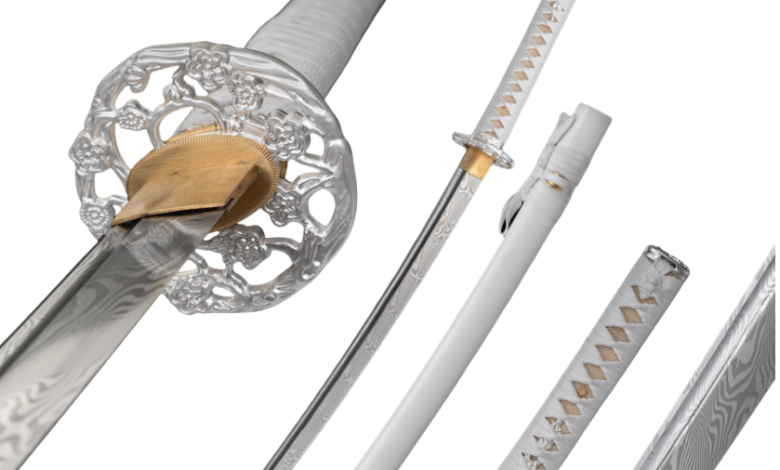Is a Katana Owner a Samurai?

The image of a warrior wielding a curved, single-edged blade is powerful and enduring. The katana, with its elegant lethality, has become a global icon, representing not just a weapon, but an entire philosophy. This mystique often leads to a simple question: If you own a katana or practice the art of swordsmanship, does that make you a samurai? The answer, however, is far more complex than a simple yes or no. It requires a journey back in time, into the heart of feudal Japan, to understand who the samurai truly were and what the Japanese sword represented to them.
This post will explore the rich history of the samurai class, the profound significance of the katana, and the code that governed a samurai’s life. We will separate historical fact from modern fiction to understand why being a samurai was about much more than just carrying a sword.
Who Were the Samurai?
The samurai were a hereditary military nobility and officer caste in feudal Japan. Their origins trace back to the Heian period (794-1185), where they served as armed retainers for powerful clans. Over centuries, their influence grew, and they became the ruling class of Japan for nearly 700 years, from the 12th century until their abolition during the Meiji Restoration in 1876.
Their role in society was not limited to warfare. As the top of the social hierarchy, they were administrators, leaders, and enforcers of law and order within their domains. A samurai’s life was defined by unwavering loyalty to their lord, or daimyo. This bond was the bedrock of the feudal system. Their status brought privilege, including the right to carry two swords—a long one (the katana) and a short one (wakizashi), together known as the daisho. This privilege was a visible symbol of their authority and social standing.
Above all, a samurai’s existence was steeped in the concepts of honor and martial prowess. They were expected to be masters of combat, ready to lay down their lives without hesitation. This dedication to duty and their lord was the core of their identity.
The Katana: More Than Just a Sword
The katana is a weapon that represents a historical narrative combining fire and steel with centuries of traditional practices. Often called a “samurai sword,” its creation was an art form steeped in ritual and spiritual significance. A handmade katana required weeks or even months to finish, a testament to the dedication of its smith. The process began with selecting high-quality steel (tamahagane), followed by countless folding operations to purify the metal and create the blade’s distinctive grain pattern (hada).
The heat treatment, or yaki-ire, was the most critical stage, creating the iconic temper line known as the hamon. This visible line is evidence of a differentially hardened blade, giving the katana its legendary combination of a razor-sharp edge and a resilient spine. The blade was then painstakingly polished to reveal its beauty and deadly function.
For a samurai, the katana was more than just a tool; it was the “soul of the samurai.” It represented their honor, their status, and their connection to a warrior lineage. The rigorous training required to master its use, known as kenjutsu, was a lifelong pursuit. It was a discipline of mind, body, and spirit, teaching control, precision, and focus. The sword was a constant companion, a symbol of their readiness to face death and uphold their duty.
See also: Business Assistance Available: Blind Frog Ranch Lawsuit Update
Samurai Identity: Beyond the Blade
While the katana was central to the samurai’s image, their identity was built on a much broader foundation. The essence of the samurai spirit was captured in Bushido, or “the way of the warrior.” This unwritten code of conduct guided their lives, emphasizing virtues such as:
- Gi (Righteousness):Making just and moral decisions.
- Yu (Courage):Showing bravery in the face of adversity.
- Jin (Benevolence):Demonstrating compassion towards others.
- Rei (Respect):Behaving with courtesy and politeness.
- Makoto (Honesty):Maintaining absolute sincerity and truthfulness.
- Meiyo (Honor):Upholding personal dignity and reputation.
- Chugi (Loyalty):Exhibiting unwavering devotion to one’s lord.
Beyond their moral code, a samurai was expected to be proficient in other skills. Horsemanship (bajutsu) and archery (kyujutsu) were considered essential martial arts, often more critical on the battlefield than swordsmanship. Many samurai were also scholars, practicing calligraphy (shodo) and composing poetry, reflecting a balance between the warrior and the aesthete. Samurai identity was a complex tapestry woven from social class, inherited duty, rigorous training, and a deep-seated moral philosophy.
The Modern Perception of Samurai
Popular culture has shaped a romanticized and often inaccurate perception of the samurai. Movies, video games, and anime frequently portray them as lone ronin (masterless samurai) or wandering heroes, defined solely by their incredible swordsmanship. While these stories are entertaining, they strip the samurai of their historical and social context. They often overlook the rigid class structure, the life of service, and the complex duties that defined the real samurai.
This modern lens leads many to believe that mastering sword techniques or owning a beautifully crafted katana is equivalent to becoming a samurai. While practicing iaido or kendo can instill discipline and respect for the tradition, it does not confer samurai status. Owning a Japanese sword, whether a functional weapon or a decorative piece, is an act of appreciation for artistry and history, not an induction into a bygone warrior class.
So, Can Anyone Be a Samurai Today?
The direct answer is no. The samurai were a specific social class within a feudal Japanese society that no longer exists. Their status was hereditary, tied to a time, place, and political structure that ended over 150 years ago. One cannot simply become a samurai in the modern world, any more than one can become a medieval European knight.
However, that does not mean the legacy of the samurai is lost. It is possible for anyone to embody the values of Bushido. Principles like honor, discipline, loyalty, and self-improvement are timeless and universal. Studying Japanese history, practicing martial arts, and appreciating the craftsmanship of a samurai sword are all ways to connect with this powerful legacy. One can be a warrior in spirit by applying these virtues to the challenges of modern life.
A Legacy of Honor, Not a Title to Claim
Owning a katana does not make you a samurai, but it does make you a custodian of a piece of history. The samurai were defined by their social role, their unwavering loyalty, and the strict code of Bushido—not just by the weapon they carried. The katana was a symbol of their identity, the “soul of the samurai,” but it was the life of duty and honor behind the blade that truly made them who they were.
While we cannot become samurai today, we can learn from their discipline and admire their dedication. We can appreciate the incredible artistry of a Masamune Swords blade and study the history it represents. By doing so, we honor the legacy of the samurai in a way that is respectful and authentic.
For those inspired to learn more, we encourage exploring resources on Japanese history, visiting museums with collections of samurai armor and weaponry, and engaging with the rich cultural heritage that the samurai left behind.


